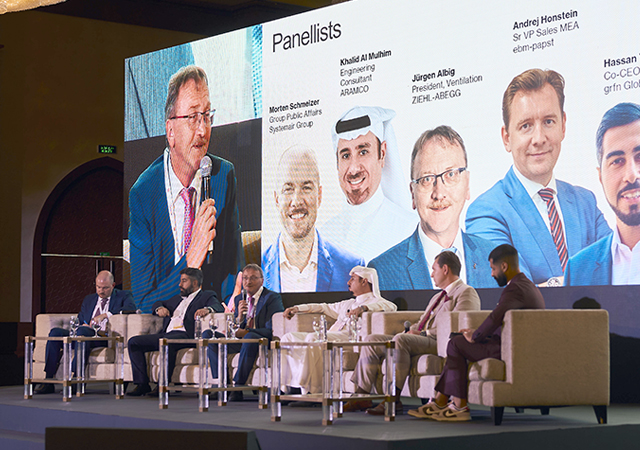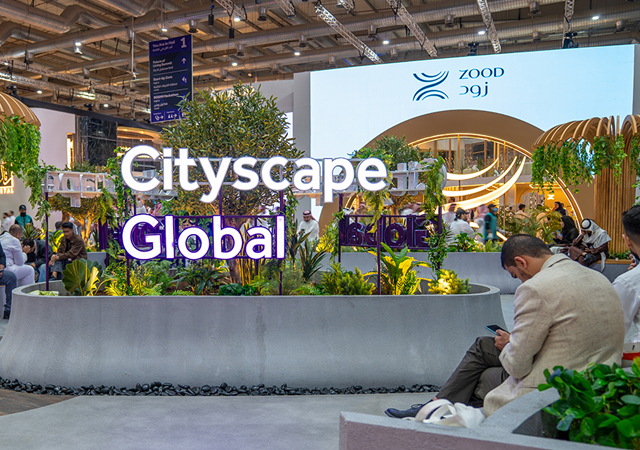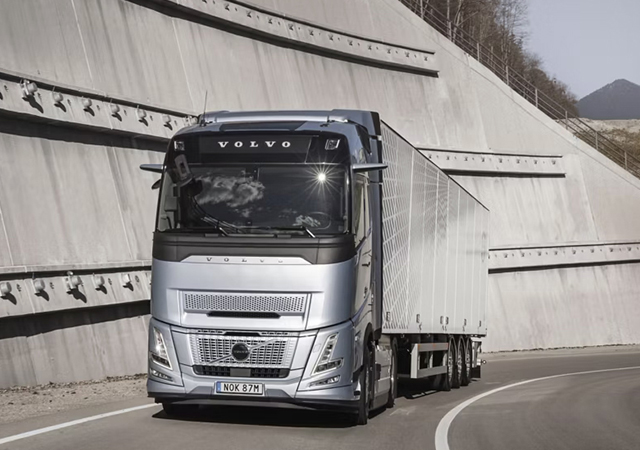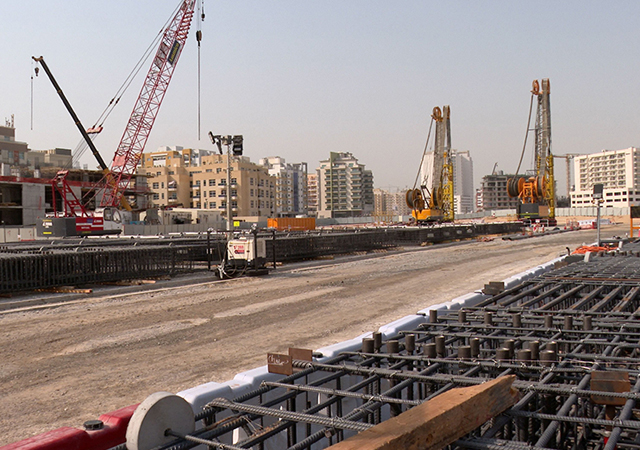

THE site of the multi-billion-dollar Jabal Omar Development, which aims to house more than 100,000 pilgrims during the peak pilgrimage seasons, is a hive of activity with work under way on two phases of the massive mixed-use development.
Overlooking the Grand Mosque in Saudi Arabia’s holy city of Makkah, the high-density development that covers a 230,000 sq m site will offer a whopping built-up area of approximately 2 million sq m, which translates to 1,500 persons per hectare.
“The unique urban regeneration scheme aims at providing first-class accommodation and supporting religious, social and commercial facilities and services to visitors and residents of the holy city,” a spokesman for Hill International, the project manager, tells Gulf Construction.
“The development will significantly enhance accommodation and other facilities for the ever-increasing number of pilgrims and seasonal visitors to Al Haram,” he adds.
 |
The Jabal Omar Development will comprise residential villas, hotels, commercial space, public parking and associated support facilities such as public assembly and prayer areas.
Phase One works, which were awarded to a Nesma & Partners under a SR3.4-billion ($906.59 million) design-and-build contract, were launched on December 27, 2010 and are scheduled for completion at the end of this year. Phase One includes four commercial centres, 10 towers, 86 villas and furnished apartments.
Construction work on the second phase was launched in March this year by a joint venture of Saudi Arabian Baytur Construction Company and Azmeel Contracting and Construction Corporation under a contract worth SR1.49 billion ($397.30 million). Phase Two building works which include a commercial area, four hotel towers and 72 residential villas, which are due for completion in March 2014. In addition, Jabal Omar Development Company (JODC), the owner and developer of this ambitious project, has recently invited contractors to prequalifying for Phase Three of the development, which includes four hotel towers, including the iconic twin towers and a central commercial market.
OVERVIEW
Located in the centre of Makkah to the west of the Grand Mosque, the project is bordered by Umm Al Qura and Ibrahim Al Khalil roads to the north and east respectively, while the Dahlat Al Rushad and Al Hafayer areas border the site from the south and west.
The development enjoys easy access from Ibrahim Al Khalil Road, Umm Al Qura Road and Dahlat Al Rushad Road and eventually by the proposed King Abdul Aziz Boulevard and the First Ring Road.
The development masterplan consists of the following main components:
 |
• Hotel towers: As per the proposed revised permit, the project will comprise a total of 38 towers ranging from 13 and 42 storeys, which are expected to accommodate 34,370 persons (normally) and in excess of 100,000 persons during the peak Ramadan and Hajj seasons.
The towers have been carefully positioned in relation to the sloping topography of the site and to maximise views to the Grand Mosque and its Al Haram Piazza. They will offer a permanent or seasonal residence and will feature three- to five-star hotels.
The centrepiece of the development will be symmetrical twin towers with an interconnecting upper bridge to house the main hotel and serve as a gateway to the Grand Mosque.
• Convention hotel: The convention centre comprises two hotel towers linked to a central hall and a main conference hall with a capacity of 3,000 persons.
• Prayer area: Strategically located at the heart of the development overlooking the Grand Mosque and its courtyard, the public prayer area or mussallah will spread over an area of 15,000 sq m and consist of six fully-covered and air-conditioned storeys that can accommodate up to 65,000 worshippers at any time. The various floors of the mussallah, which offer a built-up area of approximately 82,000 sq m, are inter-connected via an integrated system of stairs, lifts and escalators.
• Commercial outlets: The commercial space involving a built-up area of 163,266 sq m will comprise 2,400 outlets or showrooms, with the main commercial hub located along Ibrahim Al Khalil Road directly opposite to the Grand Mosque. Additionally, there will be food courts, hypermarkets and family recreational areas. Fit-out works have commenced on the retail outlets which are scheduled to open this Ramadan (July 2012).
 |
CONSTRUCTION
Phase One works, which covers building and infrastructure works in the Zones N2, N3, S1 and S2 of the area, are currently being undertaken by Nesma & Partners under two separate contracts with JODC.
Meanwhile, the Baytur-Azmeel JV has just started work on the buildings in the South Zone (Zones S3 and S4).
The design-and-build contracts for these projects were previously awarded to Saudi Oger International (North Zone) and Saudi Binladin Group (South Zone), which completed most of the foundation works in early 2008. Almost all foundations are of the raft type except for a few locations that use piles.
The buildings comprise reinforced concrete structures with precast panels and curtain-walling, with extensive use of marble and granite finishing.
The Jabal Omar Development will utilise a district cooling system, and feature an integrated command control system, a sophisticated building management system (BMS) and security system.
Besides serving as main contractor on Phase Two, Nesma & Partners is also acting as the mechanical, electrical and plumbing (MEP) contractor for the project and outsourcing the service to subcontractors.
On account of its location on the mountain crest, the project’s key challenges were faced in rock cutting and scheduling explosions to break the rock surface in a very restricted area; and in terms of logistics with the huge number of visitors as well as with numerous trades involved on site in construction, infrastructure, piling, rock cutting, rock stabilisation work as well as on the central batching plant.
Besides the main contractors on Phases One and Two, numerous other contractors were involved on the project including:
• Sami Rock, contracted for the rock cutting works for the entire project which included disposal of excavated materials to the approved yards while maintaining safety;
• Metwali Steel, who supplied stainless steel pipes for piling works on Phase Two;
• ABB, which will perform LS and turnkey jobs in addition to installation of a new 110/3.8-kV substation;
• Ammico, which is responsible for the foundation engineering works;
• Cepco, contracted to install 110-kV underground power and fibre-optic cables between the proposed 110/13.8-kV Makkah west substation and 110/13.8-kV Jabal Omar substation;
• Gesco, which is providing ground water services including observation, watertable measurements, piezometers purging, collecting water samples, in-situ chemical tests, complete laboratory chemical analysis, and biweekly, monthly and final reports; and
• Kasktas Arabia, which carried out supply, drilling, grouting and stressing of rock bolts and rock anchors for sloping rocks.

















.jpg)













 (1).jpg)

















































.jpg)





























